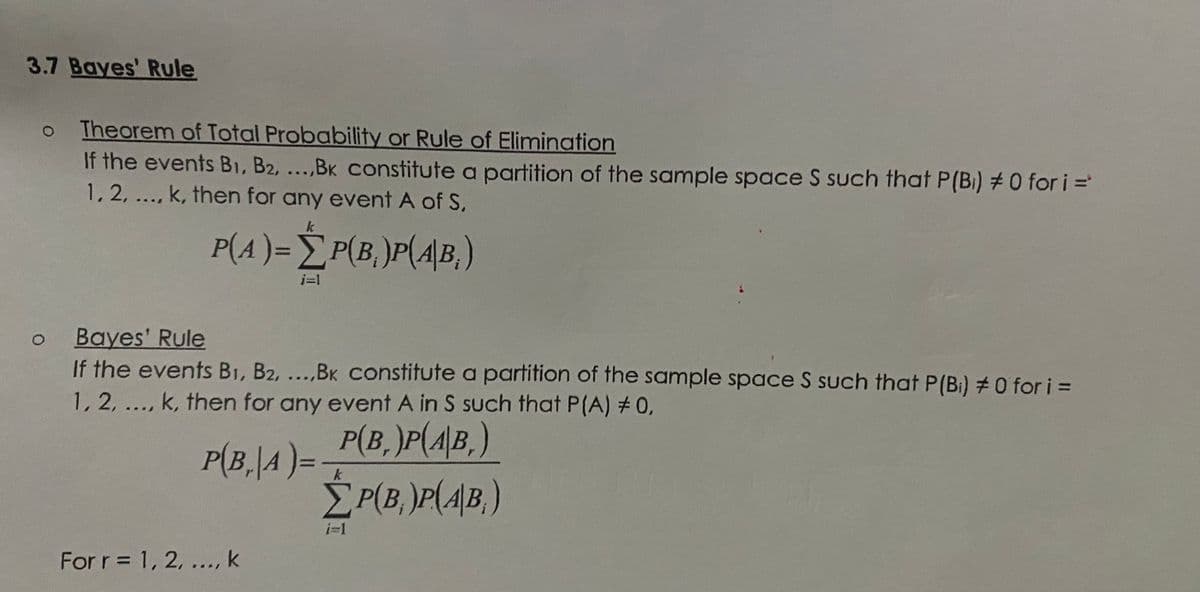a. Using Bayes' Theorem, if a person tests positive, determine the probability that the person is infected. b. Using Bayes' Theorem, if a person tests negative, determine the probability that the person is not infected.
a. Using Bayes' Theorem, if a person tests positive, determine the probability that the person is infected. b. Using Bayes' Theorem, if a person tests negative, determine the probability that the person is not infected.
Algebra & Trigonometry with Analytic Geometry
13th Edition
ISBN:9781133382119
Author:Swokowski
Publisher:Swokowski
Chapter10: Sequences, Series, And Probability
Section10.8: Probability
Problem 31E
Related questions
Question

Transcribed Image Text:3.7 Bayes' Rule
Theorem of Total Probability or Rule of Elimination
If the events B1, B2, ...,BK constitute a partition of the sample space S such that P(Bi) #0 for i =
1,2, ..., k, then for any event A of S,
k
P(A)= È P(B, )P(A\B,)
%3D
Bayes' Rule
If the events B1, B2, ...,BK Constitute a partition of the sample space S such that P(Bi) #0 for i =
1, 2, ..., k, then for any event A in S such that P(A) # 0,
P(B, )P(4\B,)
ÈP(B, )P(4|B, )
P(B,|A )=
For r= 1, 2, ..., k

Transcribed Image Text:2) Reliability of Testing. A certain virus infects one in every 200 people. A test used to detect
the virus in a person is positive 80% of the time if the person has the virus and 5% of the time if
the person does not have the virus. (This 5% result is called a false positive.) Let A be the
event "the person is infected" and B be the event "the person tests positive."
a. Using Bayes' Theorem, if a person tests positive, determine the probability that the person
is infected.
b. Using Bayes' Theorem, if a person tests negative, determine the probability that the
person is not infected.
Expert Solution
This question has been solved!
Explore an expertly crafted, step-by-step solution for a thorough understanding of key concepts.
Step by step
Solved in 3 steps

Recommended textbooks for you

Algebra & Trigonometry with Analytic Geometry
Algebra
ISBN:
9781133382119
Author:
Swokowski
Publisher:
Cengage

Algebra & Trigonometry with Analytic Geometry
Algebra
ISBN:
9781133382119
Author:
Swokowski
Publisher:
Cengage